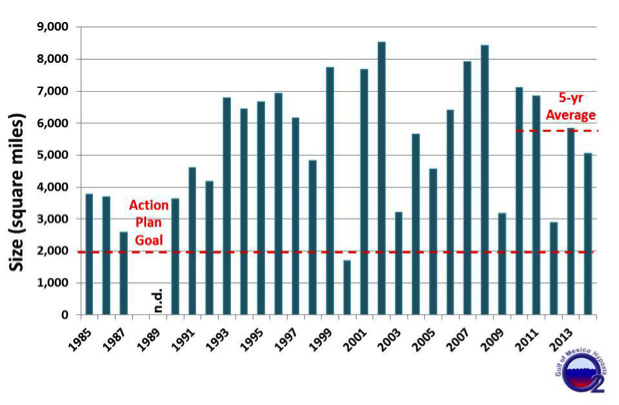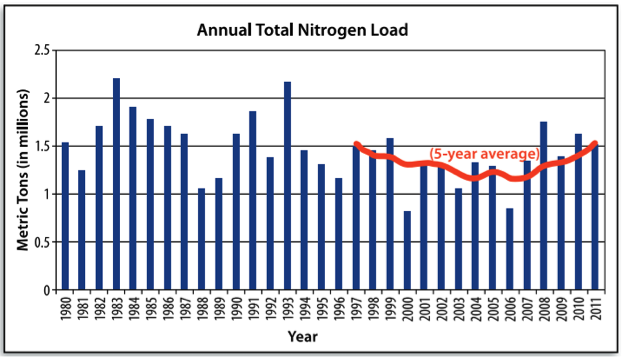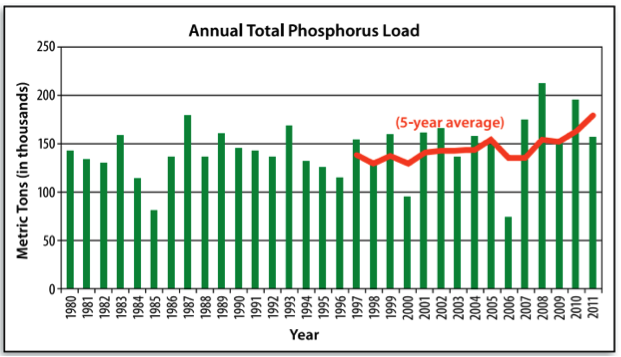Managing Runoff to Reduce the Dead Zone
What can be done to reduce the size of the dead zone?
The dead zone in the Gulf of Mexico is primarily a result of runoff of nutrients from fertilizers and manure applied to agricultural land in the Mississippi River basin. Runoff from farms carries nutrients with the water as it drains to the Mississippi River, which ultimately flows to the Gulf of Mexico. If a number of nutrients reaching the Gulf of Mexico can be reduced, then the dead zone will begin the shrink.
Since 2008, the Hypoxia Task Force, led by the U.S. Environmental Protection Agency and consisting of five federal agencies and 12 states, has been working to implement policies and regulations with the aim of reducing the size of the dead zone in the Gulf of Mexico. Many of the strategies for reducing nutrient loading target agricultural practices including (USEPA, The Sources and Solutions: Agriculture).
- Nutrient management: The application of fertilizers can vary in amount, timing, and method with varying impacts on water quality. Better management of nutrient application can reduce nutrient runoff to streams.
- Cover Crops: Planting of certain grasses, grains, or clovers, called cover crops can recycle excess nutrients and reduce soil erosion, keeping nutrients out of surface waterways.
- Buffers: Planting trees, shrubs, and grass around fields, especially those that border water bodies, can help by absorbing or filtering out nutrients before they reach a water body.
- Conservation tillage: Reducing how often fields are tilled reduces erosion and soil compaction, builds soil organic matter, and reduces runoff.
- Managing livestock waste: Keeping animals and their waste out of streams, rivers, and lakes keep nitrogen and phosphorus out of the water and restores stream banks.
- Drainage water management: Reducing nutrient loadings that drain from agricultural fields helps prevent degradation of the water in local streams and lakes.
Watch the following video from the US Department of Agriculture about strategies to reduce nutrient loading into the Mississippi River:
Video: Preventing Runoff Into The Mississippi River (1:44)
EPA website about nutrient pollution and some solutions to nutrient pollution: The Sources and Solutions: Agriculture
Activate Your Learning
Review the graphs below and answer the questions that follow. Figure 4.2.11 presents the size of the hypoxic zone in the Gulf of Mexico from 1985 to 2014. The U.S. Environmental Production Agency led a task force in 2008 that identified a goal to reduce the five-year average of the size of the dead zone to less than 2,000 square miles by 2015.



